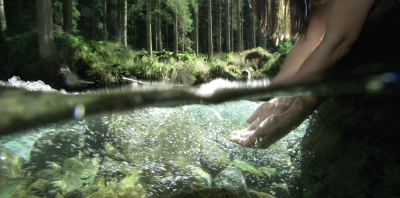
Flexible designs to efficiently trap and clear waterways of debris to improve water flow rates and maximize operation.

Flexible designs to efficiently trap and clear waterways of debris to improve water flow rates and maximize operation.
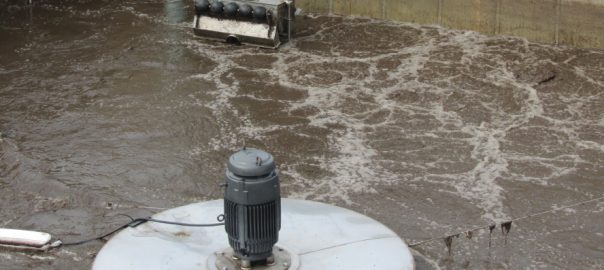
In the early 1900s, poor water quality led to about 100 cases of typhoid fever (a waterborne disease) per 100,000 people. As cities and states started looking into water treatment steps by 1920, the numbers dropped to about 34 cases per 100,000 people. Today, there are no cases of typhoid fever. Wastewater treatment is critical to having clean drinking water.
Even with all of the improvements, there are things people do not understand. One is that storm runoff and sewage treatment are not the same. Here are ten common misunderstandings regarding storm runoff and sewage treatment in the U.S.
When it rains, water that collects in roadways has to go somewhere. Cities and towns have gulleys and ditches where the rainwater goes to divert it to streams and other bodies of water. The runoff travels into city drains and channels that lead to rivers, lakes, and oceans. In a town, you’ll have gulleys and ditches instead.
People often think it’s just rainwater, so it’s clean and won’t harm the bodies of water it ends up in. This is incorrect. Along the way, it picks up motor oil and other automotive fluids that leak from cars traveling on the streets. Dirt, gravel, bark mulch, trash, leaves, grass clippings, and branches end up in it. They can clog the channels and cause back-ups. If there’s no clog, the garbage that the storm runoff picks up travels to the lakes and streams, too.
Strange weather patterns are happening more than before. While wastewater treatment plants and state wastewater districts do what they can to prepare for the unexpected, it’s impossible to predict unusual weather patterns.
For years, the infrastructure has been failing due to older sewer lines, capacity issues, and budgetary concerns. It’s a leading reason that you see cities struggling with flooding and not being designed to handle the additional volume of storm runoff and flooding in wastewater treatment plants. Updating equipment to handle increasing flow rates is essential.
There’s another problem with storm runoff. People residing in communities where storm drains exist don’t realize that some of their habits are poisoning the streams and lakes. People may pour their motor oil, cooking oil, or unnecessary cleaners into a storm drain, and those contaminants end up in the bodies of water. Washing cars in a driveway leads to various chemicals traveling to streams, rivers, lakes, ponds, and oceans.
In the winter months, cities and towns that treat roads with salt send the melted snow and salt into nearby bodies of water. Metals from rusting vehicles and vehicle parts also make their way into storm drains and ditches.
Another misconception is that stormwater goes through a wastewater treatment plant along with sewer water. This is not true. Some cities have plants that treat both, but it’s not common.
Storm runoff travels into storm drains that connect to storm sewers leading to waterways in most areas and never gets treated. In rural areas, there are usually ditches along roadways that connect to culverts that allow the storm runoff to travel to a nearby stream.
People often think that the runoff in rural areas isn’t as harmful as storm runoff in cities or industrial areas. This is incorrect. One of the worst pollutants in storm runoff is the fertilizer and manure used on farms and lawn treatments in residential areas.
Nutrients found in manure and fertilizer, such as phosphorus and nitrogen, travel to streams and eventually reach lakes. There, they feed algae blooms that can be harmful to people and animals.
A wastewater treatment plant does treat water from residences and businesses. Sometimes, an industrial manufacturer or company needs to install a wastewater treatment plant to pre-treat water before it goes to the sewers.
An on-site wastewater treatment plant helps a business recover and reuse water, reducing the volume of water drawn from municipal water supplies. Plus, it helps reduce the strain on area wastewater treatment plants. As industrial settings may create wastewater with heavier volumes of toxic chemicals, pre-treatment is critical.
Sewage treatment doesn’t take care of all pollutants. The EPA sets guidelines that wastewater treatment plants meet, but some pharmaceuticals still get through. One study found that medications like birth control pills were getting through wastewater treatment processes and making their way to lakes, rivers, and oceans, affecting the reproductive health of fish.
When people flush items they believe are flushable, it can be problematic to a wastewater treatment plant. Though it says “flushable” on the packaging, Flushable wipes do not dissolve in water. They get caught up on equipment at a treatment facility, and they can also create clogs in pipes. The same is true of “flushable” cat litter. Throw them out!
Some facilities add grinder pumps to help break down these items and prevent clogs. Grinder pumps can help, but it’s still best if people stop putting them into sewer systems and septic tanks.
Homeowners and business owners can do a lot to help stop water pollution. Carefully consider the products used for cleaning items like toilets, sinks, dishes, clothing, etc. Avoid items that contain harsh chemicals, phosphorus, etc. Aim for environmentally-friendly cleaning products.
Watch what you flush down a toilet. Toilet paper that’s two- or three-ply takes longer to break down. If you prefer thicker toilet paper, remember that it may clog your pipes. If you have a septic system, ask your septic company what they recommend. Many will tell you never to flush anything other than one-ply.
Do not put oils, especially cooking oil, down the drain. Avoid putting coffee grounds and bones down the sink if you use a grinder pump or garbage disposer.
When wastewater and storm runoff are treated together in a wastewater treatment plant, the system must be capable of handling surges. You could have staff constantly watching for rising levels of sewer water, but it’s wiser to invest in wastewater processing equipment designed to address these sudden increases.
A SharpBNR Process Control is an example. If there’s a surge, the computerized system adjusts aeration and other aspects of wastewater treatment to ensure the water is treated appropriately before it’s released.
Having equipment that can handle increased flow rates is also worth considering. If your plant is upgraded to allow for excess capacity, it’s ready to take on heavy loads. Otherwise, raw sewage is released to prevent flooding within the wastewater treatment plant, which can damage the environment and lead to fines.
Talk to Lakeside Equipment’s experts in wastewater treatment equipment to ensure your plant is equipped for increases in sewer water. When you have considered for increased caused by changing weather patterns or excessive use from area residents, you’re protected from having to release raw sewage while also helping the environment. Call us to learn more about maximizing your plant’s effective wastewater treatment processes.
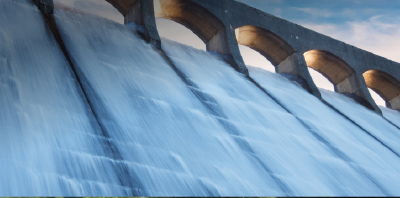
Hydro-mechanical equipment engineered to maximize reliable water filtration operations at today’s Hydropower plants.
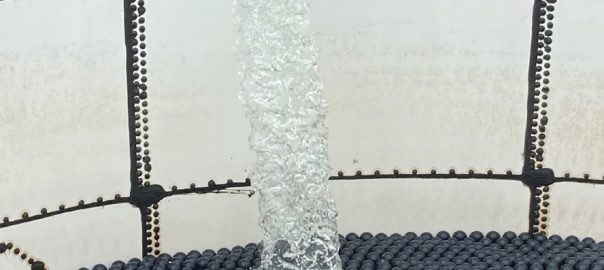
Every household in the U.S. uses an average of 300 gallons per day. The majority of water usage involves flushing toilets, washing hands, and taking showers. You also have businesses using water. Almost half of the freshwater withdrawals in the U.S. are for thermoelectric power and irrigation systems. Public use accounts for about 12%.
In 2013, only eight states in the U.S. reported water shortages as being unlikely. Montana reported a statewide water shortage was likely in the next decade. Two dozen states said there were likely to be regional shortages. Fifteen states reported feeling that local shortages were likely.
As the population grows and water consumption continues, the risk of water shortages is very likely. In fact, 2021 saw the federal government declaring a water shortage on the Colorado River. Immediate changes to water policies were discussed and reductions were placed for Arizona and Nevada.
Every measure that municipalities and districts can take to conserve water is important. That’s where a closed-loop wastewater system comes in. Instead of drawing water from lakes, rivers, and other water sources, water enters a circular system where it is treated to meet water quality requirements and reused. Learn more about closed-loop wastewater systems and see if you could make it work well for your needs.
When you have a closed-loop system, you reuse the water that’s necessary for flushing toilets, washing hands and equipment, and manufacturing or producing components, foods, etc. Water is collected and sent to the wastewater equipment to be screened, cleaned, aerated, cleaned more, and filtered. It may be treated with chemicals to remove bacteria.
Once it meets the required specifications, it’s sent back to tanks where it can be reused. A closed-loop wastewater system can’t completely eliminate your need for water from your district. There’s always water loss to evaporation. But, this type of system can drastically reduce the amount of water needed from municipal water supplies.
What Industries Benefit From Closed-Loop Wastewater Treatment?
How can businesses use a closed-loop wastewater treatment system? Here are different areas where these systems can be incredibly helpful.
Breweries use a lot of water. There’s the water needed to make the beer, rinse the grains, and clean the equipment.
Several breweries have installed closed-loop water treatment plants to reduce the amount of wastewater that’s sent to sewers. Denmark’s Carlsberg is one of them.
Wastewater from the brewing process is treated in an on-site wastewater treatment plant. The biogas produced from wastewater treatment is used to heat the brewery. The cleaned wastewater is reused for cleaning. Instead of putting water down the drain, the brewery reuses almost every drop.
Have you ever taken your car to an automatic car wash? Do you own a car wash? Studies have been completed on the amount of water used during a car wash.
With self-serve car washes, around 12 gallons are used per vehicle. A conveyor system uses about 44 gallons, while an in-bay car wash uses the most at 72.5 gallons on average. A closed-loop system is a great way for car washes to recapture the dirty water, clean it, and use it to wash more cars.
Millions of gallons of water are used every day in a large chip fabrication plant. Some of the nation’s largest chip fabs have started setting up closed-loop systems to reuse water. Others, such as Intel, have established systems that reduce the amount of water they use by over 40% and keep making improvements.
In 2018, Hiland Dairy was recognized for its closed-loop initiative. The plant added an on-site wastewater treatment facility to process the whey wastewater. The lagoons the plant added can treat upwards of 250,000 gallons per day. The whey that’s separated from the wastewater is used as fertilizer for its feed crops.
To make spirits, water is needed. It’s estimated that almost 10 gallons of water are used to make one liter of whatever spirit is being distilled. Gallons of cold water running over condensers ends up being incredibly wasteful.
To stop this waste, Laws Whiskey House in Colorado established a closed-loop system where water is recycled and cooled for reuse. This saves about three gallons of water per liter bottle of whiskey.
A hotel or resort goes through a lot of water. Guest baths and showers, toilet usage, and kitchens use thousands of gallons of water each day. Plus, you have the laundry room where sheets and towels are laundered every day.
A closed-loop wastewater system can make a big difference in a hotel or resort’s water consumption. Water is filtered to remove lint and toilet paper. It then goes through aeration and cleaning. Solids are removed and composted or removed to waste facilities. Once the water is treated and meets required standards, the water is reused.
A closed-loop wastewater treatment system can reduce a laundromat’s water consumption by as much as 80%. Once a load of laundry is completed, the wastewater is screened and sent into a tank where it is filtered to remove lint and grit from dirt. After going through additional cleaning steps and filters, it can go into water tanks to be reused to wash another load of laundry for someone else.
In 2021, a company announced they’d created The Endless Sink, a stand-alone closed-loop wastewater system that cleans the water used to wash dishes again and again without needing to draw much additional water.
A closed-loop system is great for large kitchens that serve hundreds of diners. Oils and food particles are removed. The remaining soapy water is filtered and purified to remove all bacteria. From there, it can be used again at sinks or in dishwashers.
Interstate rest stops see thousands of visitors each day. Those visitors are there for bathroom breaks and to stretch their legs. Imagine how much water is used every time a toilet flushes and hands are washed.
Vermont is home to an amazing closed-loop wastewater system that serves thousands of people every day. Instead of overworking the septic system in this rural area, a closed-loop system cleans the water for reuse. Set right off the interstate, The Living Machine is set within a large glass solarium. A series of tanks contain plants, aquatic insects, snails, and worms.
When visitors stop to use the toilets, they flush the water and it goes into the septic system where solids settle and the rest of the wastewater travels to treatment tanks where aeration occurs. After aeration, the vegetation, animals, and insects do their part to complete the cleaning process.
At this point, the cleaned water returns to the toilets and sinks in the bathrooms where it’s reused and the cycle continues. Signs tell visitors about the process and provide notice that the water is not meant to be consumed.
Your company goes through thousands of gallons of water every day. It’s time to consider how you can lower your impact on the environment. What steps can you take to reduce the amount of water you’re using to wash equipment, process foods, or other processes that require a lot of water?
Work with the engineers at Lakeside Equipment on the closed-loop wastewater system your business needs. Whether you need a large system or a smaller one, we can help you. Since 1928, we’ve specialized in water treatment for industrial and municipal settings. Call us to learn more.
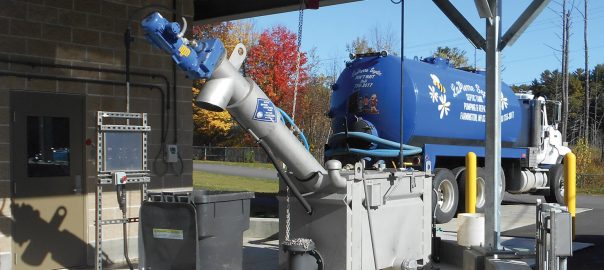
Here’s a concerning statistic. There are more than 16,000 wastewater treatment plants in the U.S. and many of them are at 81% of their capacity. About one out of five are at or over their max capacity. When a facility is at max capacity, untreated wastewater ends up flowing into lakes, rivers, and streams where people and animals are exposed to it.
In 2019, districts across the nation spent more than $3 billion on upgrades or repairs to pipelines. The gap in what was needed was around $81 billion. Recent grants and funding promise to help with some of this, but there are still many districts that have an impossible choice. Do you repair your district’s system again and hope it lasts or is it time for upgrades?
On average, a wastewater treatment plant is designed for no more than 50 years before changes are necessary. As the populations in towns and cities increase, more wastewater goes to a plant, and that means the existing equipment may not be enough. If more wastewater is coming in than the equipment is able to process, the release of untreated wastewater is going to happen.
Are the fines you’ll face from the EPA or your state government worth it? These fines may end up costing more than upgrades would cost. Take a look at some of the recent fines issued to wastewater treatment plants in the U.S.
One thing to remember is that many of the fines also come with the requirement that you make the required upgrades or repairs. You end up having to pay even more, and your wastewater district members may not like the rate hikes that are required to cover these urgent fixes.
It’s clear that something has to change. When should you repair rather than pay for upgrades? The most important reason to repair is that your budget is limited. No one wants to scrape along with older equipment, but if there’s simply not enough money for upgraded equipment, repairs will have to suffice for now. What other situations call for repairs over upgrades?
If your equipment is still newer, it’s not always smart to replace it yet. It still has a lot of life left, so repair whatever isn’t working effectively. If a pump blows, it’s better to replace the pump than an entire system.
It may not be the right season to be shutting down part of your wastewater treatment plant. It’s winter, and more people are at home and taking warm baths at night, so wastewater generation is higher than it is in the summer. Your town might be a popular spot for tourists, and once the summer tourism season ends, wastewater generation will drop by more than half. If you need to repair now to buy time until less wastewater is being generated, wait until then.
You may have applied for grants to pay for new wastewater treatment equipment, but the grant money isn’t being distributed until the third quarter. You can’t hold off yet, so make just enough repairs to carry you over and then replace equipment when you have funding.
Before you even experience fines, when should you consider upgrades? Here are five reasons to upgrade.
Your bills keep rising, and the people in your district are not happy about it. This can be a sign that pumps and motors are working more than in the past. Upgrading to more energy-friendly pumps and motors will cost money, but the amount you save on energy bills makes it worthwhile.
You can also consider upgrades to help power your plant. Add a system that converts the methane your plant produces into fuel to heat to cut your heating bills. Look into solar panels and wind turbines to help produce the energy your plant needs to run.
Your equipment seems to break down every month. When that happens, you have to stop the treatment process or lower the capacity, which puts you at risk of flooding and raw sewage releases. If you’re spending more time on repairs than you have in the past, it’s time to look into upgraded, maintenance-free wastewater treatment equipment.
Your town should be considering the added wastewater generation when new construction is considered, but you can’t always control how many people move into a new home. You also can’t control how many showers or baths a person takes each day. You will have the people who take a bath and two showers every day without realizing how much extra wastewater they’re generating. If the wastewater generation is more than planned, you could find yourself quickly reaching capacity.
By building a system that’s larger than needed, you help allow for growth. If more people moved into a new development than you expected, you still have plenty of capacity for the increase. You do need to closely monitor this throughout the year and remain in contact with the city planners.
Wastewater treatment standards change from time to time. As the guidelines regarding the max levels of a certain component change, you need to meet or exceed the changing guidelines. This may mean having upgraded equipment that’s able to filter the wastewater to the appropriate levels.
When your wastewater treatment plant is at or very close to capacity, it’s time to upgrade your equipment. You can’t risk the fines you’ll get by releasing raw sewage. You have systems in place to monitor how much wastewater is treated and flows into your plant, keep track of these numbers, and address issues sooner rather than later.
You might save a lot of money with repairs, but you’ve been told that the repair is only going to carry your plant for a month or two. If you have to pay for the same repair weeks from now, why keep spending money? Pay for the upgrade once and avoid all of the extra repair costs.
Sometimes, the costs of repairs vs. upgrades are not as different as you might imagine. Talk to an expert in wastewater treatment plants to find out how much it would cost to repair equipment vs. replace it. You may find that it ends up being more affordable to replace equipment. Plus, there may be incentives that you can apply for to help cover some of the cost of the infrastructure upgrades you need. If you’re saving your district’s members money in the long run, they’ll appreciate it.
Lakeside Equipment offers cost-effective upgrades if that suits your district better. Or, work with our team on repairs that provide the efficiency and effectiveness you need. Water treatment is our specialty and it’s one we’ve been involved in since 1928. Our mission remains to have Cleaner Water for a Brighter Future. Talk to us to learn more about the ways you can join us on that mission.
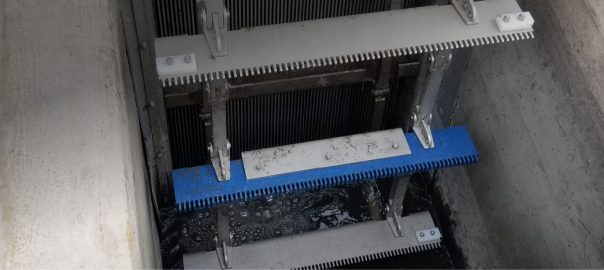
Does your wastewater treatment plant have trash rakes installed to clean racks and screens from the trash that collects as wastewater comes in from sewers? Why is this important? It keeps the lines from clogging with unnecessary items and dead animals that have made their way into sewers. It also helps prevent excess strain on pumps, pipes, and other wastewater treatment equipment.
Trash rakes work with your existing trash racks and screens. If you don’t have them installed, you should. If you do and they’re not working effectively, it’s important to look at making upgrades to ensure your sewer system or stormwater drains don’t back up because the water can’t get through.
People don’t always realize that the items they’re flushing are incredibly damaging. Those items need to be screened before they cause equipment failures that can take time and money to repair. Sometimes, the items that get flushed are believed to be flushable. Flushable wipes are one of the most common. While the packaging says they’re flushable, they do not break down easily.
That’s just a start. Pouring grease down a drain creates fatbergs that clog lines and may break off into chunks and make their way into wastewater treatment plants to further clog lines. In New York City, the city reported that of the 2,382 sewer backups in 2018, three out of four of them were caused by grease buildup. At that point, one sewer line repair cost as much as $15,000.
Plastic tampon applicators, wrappers, condoms, pads, diapers, and cat litter are other problematic items. There are surprising items that you wouldn’t expect, too. The American Chemical Society reported that 21% of contact wearers flush their disposable contacts rather than throwing them into the trash as they should. It’s estimated that 3 million contacts end up in wastewater treatment plants.
Some wastewater treatment plants also receive stormwater when it rains. In facilities where stormwater and sewer water both come into the plant, a trash rack can capture leaves, branches, rocks, and trash like bottles, cans, and plastic bags that travel into storm drains and to wastewater treatment plants or rivers, lakes, and oceans.
To prevent damage from these items, they get caught up on trash racks and screens. Rakes are used to rake or scrape debris from the racks or screens, move them to dumpsters, and move them to landfills or incinerators.
Trash rakes also help clean the screens and trash racks to ensure water continues to flow into the plant. If too much trash builds up, the water flow diminishes and that could lead to back-ups in the sewer lines.
What type of trash rake is best for your wastewater treatment plant? It comes down to your current equipment and plant size. Generally, there are two raking systems: cable operated and hydraulic
Catronic systems are heavy-duty systems using a rake head and cable winch that can clean trash racks with depths of 200 feet and lift up to 20 tons of materials. They’re energy-efficient and can be retrofitted to existing structures. They’re also easy to maintain as the components are above the water during standby.
Monorail systems are best for facilities that have several bar racks. The Catronic Monorail systems are suspended above trash racks on a monorail. The trash rake moves along the monorail and drops down using the cable system. It’s then pulled back up to move the trash into an awaiting dumpster.
The Catronic Monorail system can be retrofitted to work with existing trash racks. It’s energy-efficient and works effectively. Maintenance is performed once the system is parked away from the rack. As the rake travels along the monorail to areas away from the operating deck, trash isn’t accidentally dropped into inconvenient areas.
Your options are:
Hydraulic systems telescope to the trash rack to clean it. As there is no need for a monorail or guide, it can clean at better angles (up to 90 degrees), which makes it a favorite choice for wastewater treatment plants. You can get stationary, swiveling, or traversing rakes. You can get single gripping jaws, triple jaws, or orange peel grapples that can go hundreds of feet down.
Some of the advantages of hydronic trash rakes include that operators can adjust the pressure on the trash screen for optimal cleaning. All mechanical components are above the water for easy maintenance, plus there are no chains, guides, or sprockets to wear out. You can get Hydronic trash rakes in galvanized steel or stainless steel.
Your options are:
The goal of trash and screen rakes is to capture and remove debris before it clogs lines or damages equipment. With so many consumers and businesses flushing items that shouldn’t go down the toilet, trash and screen rakes are a necessary investment. How do you know what you need?
When you’re considering your options, look for automated trash rakes. In Portland, Oregon, older trash rakes weren’t doing their job with the flood management system and kept shutting down. Employees had to go out on a barge to clear the grates.
The city upgraded to trash rakes that could lift a minimum of 2,000 pounds instead of the 1,250 pounds the current system was managing. They also needed a trash rake that fit the required dimensions. They ended up choosing five Lakeside Muhr Model T-260 Hydronic T trash rakes. Cleaning time was greatly reduced and efficiency at the plant greatly improved.
The easiest way to design a trash rake system that does what you need is by working with a professional. Lakeside Equipment has a complete line of trash and screen rakes. We’ve been engineering, developing, and providing the water treatment systems municipalities and industries need since 1928. We have a lot of experience in designing cost-effective, efficient systems.
Talk to us to learn more about your options that will complement your current equipment and protect the piping, pumps, and other wastewater treatment from costly damage. Contact your local sales representative today.
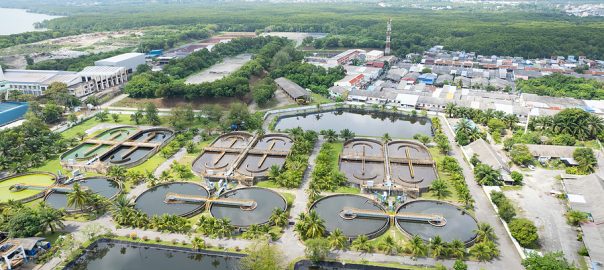
People often flush items that never should have been flushed. Menstrual products, diapers, baby wipes, condoms, and even accidental children’s toys can end up in the sewers and septic tanks and into your wastewater treatment plant.
Items like paper towels, baby wipes, and even the supposedly flushable wipes or cat litter can collect grease that goes down drains while washing dishes. It creates the fatbergs that create blockages in sewers.
Fatbergs can be gigantic and create major headaches for wastewater workers. The biggest fatberg in the U.S. to date was found in Detroit and measured 6 feet tall, 11 feet wide, and 100 feet long. This isn’t the largest fatberg found in sewers. One found in London was estimated to weigh 130 tons and stretched for over 820 feet.
It’s not just things that people put down the drain or flush in a toilet. If your district has a combined sewer overflow, which combines stormwater runoff systems and the sewer system, you’ll also end up with trash, branches, leaves, and other debris. All of these items can do a lot of damage by clogging channels and lines or getting caught on equipment. It’s important to screen incoming wastewater and septage to remove them.
A 2019 NACWA study looked at the added cost that baby wipes place on different states’ wastewater districts. In California, the cost came to more than $47 million. New York was second with added costs of almost $38 million. Illinois, Ohio, and Texas rounded out the top five with respective totals of $29 million, $25 million, and $25 million. In all, wipes add more than $440 million in operating costs to wastewater treatment plants throughout the country.
People in your district may not have any idea of the problem they’re creating while using wipes. Many are marked as flushable products, just like toilet paper, yet they do not dissolve effectively. Ryerson University looked at 101 brands of wipes, 23 of which were labeled flushable, and none of them broke down enough to prevent clogs.
Once in the sewer lines, wipes can increase operating costs by creating fatbergs that must be broken up and removed. At lift stations, they accumulate on screens and have to be removed, but if the bar screens are not narrow enough, they get into grinders and pumps and increase maintenance on those pieces of equipment. Wipes increase the maintenance that has to be performed on grinder pumps, dewatering pumps, mixers, and tanks.
An overloaded plant can also pose problems. If a clog has slowed wastewater from reaching your plant, you can have backups causing damage to homes and businesses. It may back up and enter the environment. If you have a sewer overflow, you face costly fines. When the wastewater finally releases as a clog is broken up and removed, you have a rush of wastewater coming into your plant. If you overload your equipment, you may have to release raw sewage, which can also lead to fines.
Wipes also drive up your plant’s disposal costs as items must be removed to containers, and trucked to landfills. You have the trucking fees, extra manpower, and disposal fees at the landfill.
The NACWA broke down what the added cost of wipes adds to a household’s sewer bill. In some areas, it’s about $5 a year, but it can be as much as $25 per year extra. This may not seem excessive, but added to other increasing expenses, it can strain households with a limited income.
There are two things you need to do. First, educate your district members about the importance of flushing only toilet paper and throwing out wipes, sanitary products, paper towels, condoms, etc. Make sure they are well aware of the problems that can drive up their annual wastewater bills. Second, install bar screens at your wastewater facility. Bar screens prevent a lot of frustration and damage in the long run.
To reduce the damage and annoyance trash and wipes cause, bar screens are an important primary step in any wastewater treatment plan. If your plant doesn’t have a bar screen system or has an older, outdated one, it’s time to change that.
As wastewater comes into your plant, it travels through a channel and that channel has a series of coarse and fine bar screens that are usually spaced between a quarter-inch up to three inches apart. They trap items that shouldn’t be in a wastewater treatment plant, such as plastic or paper items that were flushed, animals that got into the sewers and died, and other debris like bone scraps that may get rinsed down the sink.
The bars trap the items, which could pose problems if they’re just left there. They’d block the flow of wastewater over time. That is prevented by having an automated rake that sits on the bottom of the channel and moves upward to capture all debris and some solids and lift it out of the wastewater.
At that point, the items that have been removed can go into bins to go to the landfill. Trash and hard organic materials aren’t going down the line where they can damage equipment or become extra work for your employees. The wastewater flows into the plant to begin the treatment process.
The CO-TEC screens have fine and coarse galvanized steel or stainless steel bar screens that are cleaned by rake teeth that are positioned downstream of the bar screens to capture and remove trash and other debris. As all of the parts are above the surface of the wastewater, the maintenance on them is easier for your workers.
Lakeside Equipment is a trusted provider of wastewater bar screens and other crucial equipment that improves efficiency within your plant. New equipment does have an upfront cost, but the savings on the plant’s electricity bills provides a return on your investment in little time and keeps maintenance and operating costs down in the years to come. That makes the people in your district much happier in the long run.
Since 1928, Lakeside Equipment has specialized in water purification. Not only can we repair your existing wastewater treatment equipment, but our professionals offer sound advice on what you can do to improve your plant’s efficiency and avoid costly fees for improperly treated wastewater or sewer overflows.
Our team helps design the upgrades you request, keeping within your budgetary restraints, and installs bar screens that prevent problems caused by items that shouldn’t ever be flushed. Give us a call to find out more about the benefits of bar screens.
Sources:
https://www.mlive.com/news/2018/09/fatberg_metro_detroit.html
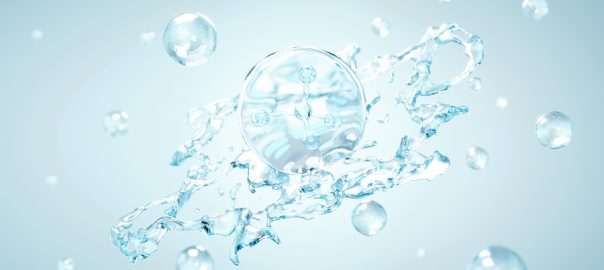
Wastewater is the water and material that travels from a home, business, or factory to sewer lines or septic tanks. It includes a mixture of inorganic, organic, and solid materials. The water from showers, sinks, dishwashers, toilets, and washing machines all become wastewater. It also includes the water used in food and beverage manufacturing and processing, paper mills, and many other industries.
Some cities and towns have stormwater drains connected to the area sewer systems, known as combined sewer overflows. Combined sewers are not ideal as any heavy rains or melting snow also become part of the wastewater a plant receives for treatment.
Around 700 combined sewers exist in the U.S. All of these combined sewers have to have plans in place to reduce the release of raw sewage if it floods, as do all sanitary sewer overflows, which are the typical sewer lines and sewer systems found across the U.S.
Before this wastewater is released into a body of water, be it a river, lake, or pond, solid, organic, and inorganic materials must be removed. How is this done?
Solids are pretty easy to understand. It’s the fecal matter, toilet paper, and items that shouldn’t have been flushed like toys, baby wipes, and plastic wrappers.
You also have organic and inorganic materials. Organic matter includes living things like bacteria, parasites, fungi, and algae. Inorganic matter includes the minerals, metals, chemicals, and salts that are in urine, industrial wastewater, detergents and cleaning products, and water from washing dishes and cooking.
All organic, inorganic, and solids have to be removed from wastewater, and it usually involves three main treatment steps and the different stages of each one. The steps include:
In primary treatment, wastewater moves through screens where solid materials like plastic applicators and bags, sticks, and other trash catch on the screens and is raked into collection bins to be transported to the landfill. In most plants, the wastewater now goes through grit removal, where items like coffee grounds, eggshells, sand, bone chips, and seeds are removed. It’s important to remove grit before it damages equipment through abrasion and settles and clogs pipes. The grit can be transferred to compost piles or landfills.
After grit collection, the wastewater flows into tanks where it is given time to settle. During settling, the heavier waste sinks to the bottom. Lighter materials like fats, oil, and grease (FOG) float to the top. The FOG is skimmed and removed, while solids are pumped from the bottom for sludge treatment. The remaining wastewater moves to secondary treatment stages.
Sludge treatment is a separate process where it is introduced to bacteria to help it decompose. This process produces methane. Some districts have systems set up to capture the methane biogas and use it to generate power or heat the buildings in the wastewater facility. The remaining sludge may be incinerated or disinfected and used as fertilizer.
Wastewater that isn’t part of sludge or oily scum moves to secondary treatment stages. The next stage of cleaning the wastewater involves bacteria. Any sludge that remains goes from the bottom of the tank back to the beginning of the process to start over.
Some districts use fixed film systems to encourage the growth of bacteria as wastewater flows into secondary treatment steps. Others use suspended growth systems using decomposing bacteria and aeration to help grow bacteria and speed up digestion and decomposition. This is also helpful in reducing the ammonia found in wastewater from urine.
With an aerated system, wastewater moves to aeration tanks where oxygen is added to help aerobic bacteria thrive as they consume the organic materials that remain. Bacteria will remove these particles before their lifecycle ends. At that point, the wastewater is almost clean and heads to the final steps in wastewater treatment.
Filters may be used to help filter any remaining particulates. Biofiltration is used to filter out some of the particles remaining in the almost-cleaned wastewater. Biofiltration may use sand, charcoal, or coconut fiber filters. Each plant has its preferred biofiltration material.
Often, the levels of nitrogen and phosphorus are still too high to be safely released into area lakes and rivers. If they were released at this stage, they encourage the growth of algae blooms and invasive weeds. For that reason, the water treatment process isn’t done.
More bacteria are needed to absorb phosphorus and nitrogen. Or, water may be moved into lagoons where plants and zooplankton absorb them over time.
To kill any remaining pathogens, chemicals like chlorine might be introduced. If they are used, the water has to be exposed to UV lights to dissolve the chemicals to recommend levels before the treated wastewater is released or transported to a water treatment plant to go back to area homes and businesses.
The equipment used and stages followed depend on the district and what the EPA permitted levels allowed in that region. Every wastewater treatment plant has instructions from the EPA setting limits for things like chlorine, E. coli, etc. are allowed. Wastewater treatment plant stakeholders need to make sure the equipment in the plant is capable of performing the job effectively and efficiently.
Saving money is ideal, but not if the equipment you’re saving money using is failing to do the job required of it. Upgrading equipment for better performance saves money in the long run as you won’t face fines and potential criminal charges.
If you read the news, you probably spot articles from time to time where a wastewater district was fined for releasing raw sewage – either knowingly or accidentally. Automation is one of the best tips for getting solids and inorganics from wastewater. When you have automated wastewater treatment equipment, the computer can gauge flow rates and adjust pumps and aerators accordingly.
This ensures the different steps are handled correctly and lowers power consumption and wear and tear by slowing down pumps when people are using less water in their homes while they’re sleeping or at work. During the busier times of day, such as morning showers or dinner-time chores and preparations, computers will increase pumps as needed.
If something is changing and needs correction, a SharpBNR and PLC instrumentation package helps prevent the release of raw sewage. Paired with SCADA systems and HMI, human error is less likely to happen as alarms are sounded before major problems occur. You have time to react, and options like Variable Frequency Drives and motor starters make adjustments so that your team isn’t rushed to get to the right area of the facility. If you don’t have this technology in place, it’s time to look into it.
Take time to talk to your district’s residents and business owners. The more they know about the problems that impede water treatment steps, the easier it is to do your job. They may not realize that a “flushable” wipe, wrapper, or applicator isn’t truly flushable. Mailers and ads help spread the word.
Lakeside Equipment has close to a century of experience in water treatment technology and equipment. We’re leaders in water quality and are happy to talk to you about your plant’s equipment and design and offer insight into the solutions available to increase efficiency and water quality, all while lowering your maintenance costs and demands. Reach out to us and let us know how we can help.
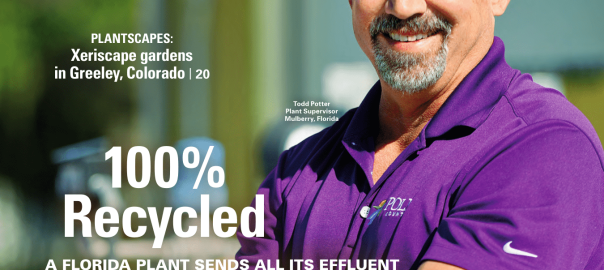
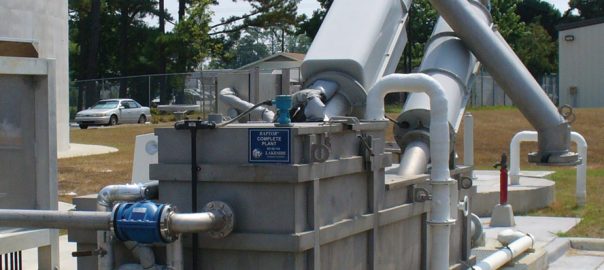
Every corner of the country has been impacted by the coronavirus pandemic. Across the nation, there have been more than 5.75 million cases of COVID-19 and more than 177,700 deaths. It’s alarming to think of how fast this virus has spread during 2020. One area people don’t think about is the impact of COVID-19 on wastewater treatment.
While it might not be something you stop to consider, COVID-19 has impacted the wastewater treatment industry, too. It’s affected wastewater treatment in several ways ranging from increased residential wastewater to clogged pipes and equipment. There’s also the fact that the body does shed the virus through the waste that ends up in the wastewater traveling through sewer lines and into residential septic systems.
The CDC and the U.S. Department of Health and Human Services have started a surveillance program to track the levels of COVID-19 in wastewater. While no one has found evidence of the virus spreading through wastewater (treated or untreated), the virus is present in the feces of those who have the virus. By studying patterns, experts know where they should be looking for COVID-19 clusters and making testing available.
The other reason it’s important for wastewater treatment plants to test for COVID-19 is to keep workers safe. Employees who work in wastewater treatment plans should take protective measures with personal protective equipment and safe practices at work. Doing so can eliminate the risk of contamination from untreated wastewater.
One of the problems wastewater treatment plants are facing with the pandemic has been trash in the sewer lines. Around the nation, wastewater treatment plants are facing issues from a large increase in protective gloves, masks, and disinfecting wipes making their way into sewer lines and wastewater treatment plants. People are flushing these items instead of disposing of them in the trash as they should.
Most toilet papers disintegrate in water. It usually takes no more than 24 hours. Wet wipes don’t break down as quickly. They may flush and make it through toilet pipes, but as they travel through the sewer, they can catch on tree roots, curves, and other items and collect other items. Soon, there’s a huge blockage of fat, feces, napkins, tampons, and wipes that isn’t breaking down. It slows down the wastewater’s flow and can lead to sewer backups and spills.
As the pandemic started, toilet paper stocks decreased. Soon, toilet paper shortages were affecting everyone. People were turning to baby wipes, makeup removers, and any other moist wipe they could use in place of toilet paper. Napkins and paper towels were other items people were using in place of toilet paper. Rather than throw them into the trash, as they needed to, they were flushing them. These items do not break down quickly. They were causing clogs in sewer lines and water treatment equipment.
Latex or non-latex gloves and disposable masks were other items getting flushed. Again, they don’t degrade in water, so they were clogging lines. In Washington, a bill was signed making it illegal to flush non-flushable wipes starting on July 1, 2022. In Tennessee, one town’s sewer workers started cleaning sewer pumping stations twice a week instead of once a month. An Air Force base in California has crews working 16-hour shifts to remove clogs from pipes. In Maryland, one wastewater pumping station saw an increase of more than 37,000 pounds of wipes during the first quarter of 2020.
All of this is costing cities and towns a fortune in additional hours and repairs. People need to remember to only flush toilet paper and human waste. Despite the pleas from one side of the nation to the other, people keep flushing things that cause harm. That’s one of the biggest ways the pandemic has impacted wastewater treatment. Grinder pumps and screens are essential to handling all this increased trash, but not every district has the money available to install them.
With more people working from home, residential water consumption has also increased. A water monitoring company studied water usage and found it increased by about 21% per day. Some cities saw higher increases. For example, New York City’s residential water consumption increased by 28%. In Minnesota, the increase was 25%. People working from home are doing more laundry, using the toilet more, washing more dishes, and taking more showers. People are also washing hands more as is recommended by the CDC.
This increase in water usage means wastewater treatment plants are treating an increase in water. Water treatment plants that treat a lot of water from commercial industries may see decreases, but water treatment plants serving mostly residential structures are facing large increases that older equipment may not be able to handle.
Another change with water usage is when peak water usage is happening. It used to be that most families showered and ate breakfast in time to catch buses/trains and commute to work or school. Families had to have kids ready to get on the bus for the early morning pick-up. Commuters had to be out of the home early to beat rush hour traffic. Wastewater treatment plants expected the highest water flow around 7 a.m. and again around dinner time or 6 p.m.
Without the rush to commute or get to a bus or train, people shifted their morning routines an hour or two later than normal. Peak water usage is now around 9 a.m. instead of 7 a.m. Water treatment plants expect changing flow rates throughout the day and may use computers to speed up or slow down equipment accordingly. Not every plant is set up this way, however. Changes in flow rates at unexpected hours can cause problems. If treatment plants have flow rates that are higher than anticipated, they may have to ask residents to avoid running appliances during certain hours to reduce the strain on older equipment that cannot keep up.
People who get their residential and commercial water from treated water do not have to worry about the virus still being present. Wastewater treatment processes kill viruses and bacteria. After filtering wastewater, aerating it, and using chemicals to kill any residual contaminants, water that’s returned to bodies of water or put into storage tanks for public water systems. No evidence of COVID-19 surviving water treatment has been found.
What if untreated wastewater makes it into lakes or streams after heavy rains? There is the chance that COVID-19 will be in untreated water, but there has not been any known case of the virus spreading through wastewater spills. Wastewater treatment plants should do everything possible to prevent untreated wastewater spills by making sure their system can handle an increased capacity and repair broken equipment and lines.
Can steps be taken to eliminate the chances of COVID-19 untreated wastewater from returning to the environment? How can plants anticipate changes in peak water flow? What can be done to stop people from flushing their gloves, masks, and wet wipes? Upgrading equipment is key. Older infrastructure needs to be improved to reduce energy consumption and keep up with changes in wastewater flow rates and screening.
Lakeside Equipment is here for districts that need to repair their equipment due to damage from items that shouldn’t be flushed. We can also help districts upgrade equipment to be more energy-efficient or handle an increase in residential wastewater as people are working from home and cooking more meals at home. Reach us by phone or email for more information on a new wastewater treatment system or to discuss upgrades that will save your district money.